Experience Sampling Methodology –
A Case Study in Enhancing the Overall Personal Productivity of
Tuen Mun Nursing School Students
﹣

____________
Objective & Strategy
The objective of this study is to investigate the daily study habit and routine of the Tuen Mun Nursing School students and explore design opportunities to enhance their personal productivity while in the school environment through the methods of ESM and User Interviews.
This study comprised of three main parts:
(1) Observation was done at the Tuen Mun Nursing School to collect preliminary information about the school environment;
(2) User Interviews with Year 1 and Year 3 students to collect preliminary information about their perceptions of the school environment and teaching mode, and to learn about the students’ background and their study habit;
(3) ESM study was designed base on the findings from the Observation and the User Interviews intended to uncover the deeper level of participants’ perception, motivation and feeling toward productivity in the school and outside of school environments while engaged in study related activities.
This study comprised of three main parts:
(1) Observation was done at the Tuen Mun Nursing School to collect preliminary information about the school environment;
(2) User Interviews with Year 1 and Year 3 students to collect preliminary information about their perceptions of the school environment and teaching mode, and to learn about the students’ background and their study habit;
(3) ESM study was designed base on the findings from the Observation and the User Interviews intended to uncover the deeper level of participants’ perception, motivation and feeling toward productivity in the school and outside of school environments while engaged in study related activities.

____________
Observation & Interview
Interviews was conducted in the form of semi-structured conversation with the goal to explain the purpose of the project, set expectation of the users’ participation, and to understand the users’ background, daily routine, and the type of usage and interaction with the NS building and facility. The interviews were recorded and translated into transcript for analysis. Findings from the analysis was later used as a guide to the design of the ESM tool.
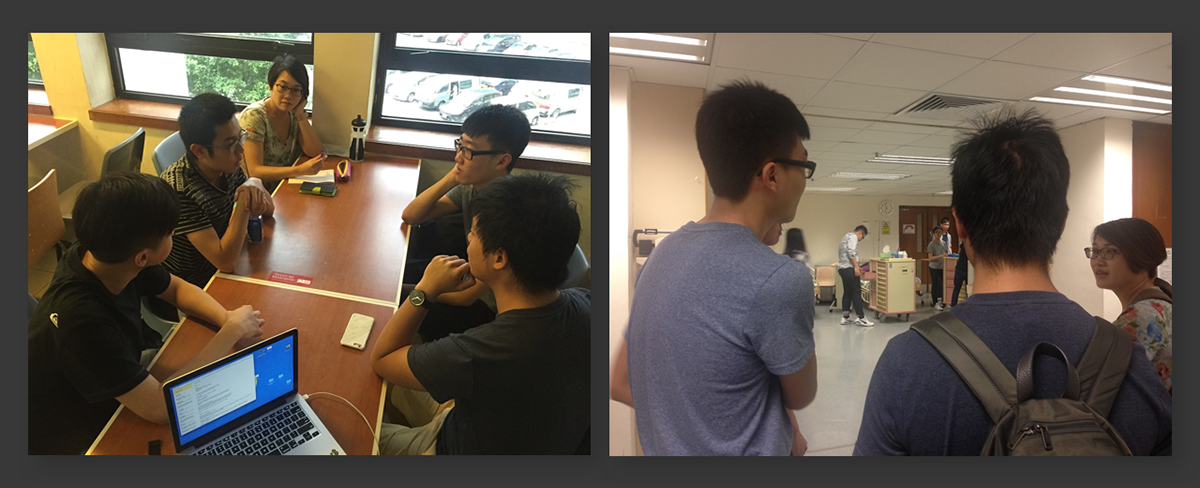
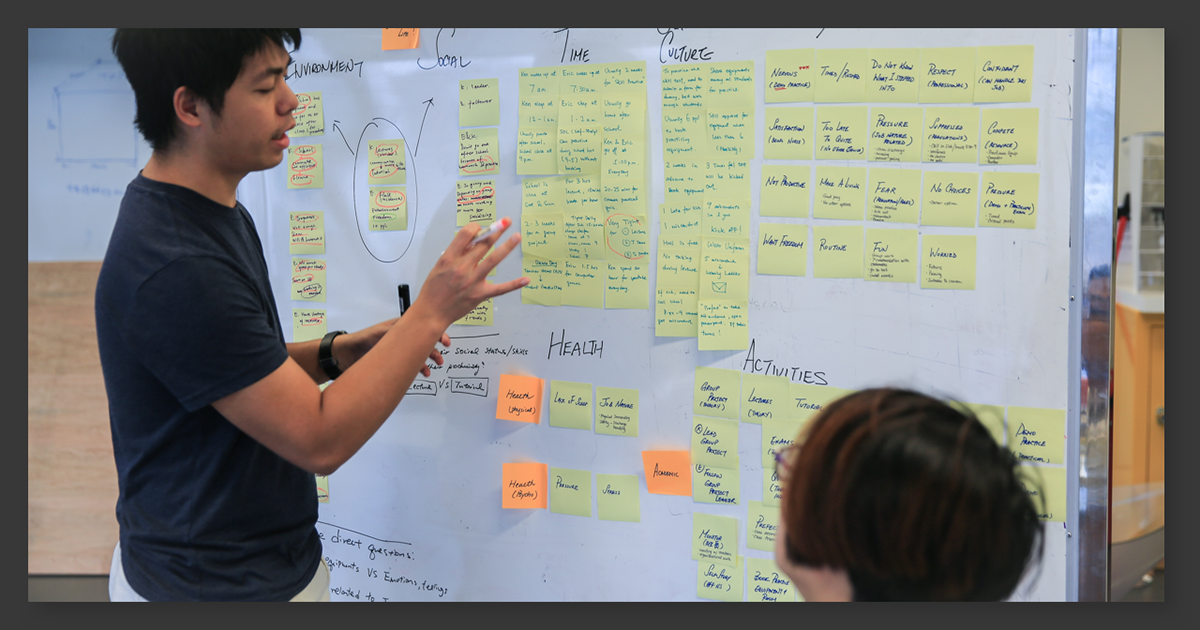
____________
ESM Tool
The class schedule of the participants and their daily school and study routine were studied and analyzed. Due to its routine nature and that the class schedule was fixed, the collecting intervals were a mix of time and event base customized to the participants’ existing schedule. The collection frequency was set to be seven entries per day one entry in the morning before school starts collecting baseline information of their mood and productivity expectation, five entries corresponding to the participants’ class schedule with 4 class sessions and one lunch break to collect data while they were at school; and the last entry at the end of the day collecting not only data about the productivity of participants in an environment outside of school as a comparison to while in the school environment but also collect data about the participants’ day overall.
Per User Interviews findings, students were not allowed to use mobile phone during classes. In respect of this school practice, a tangible object was designed to collect ESM data while students were at school. For the first and last ESM entries collected outside of school, the digital input was used.
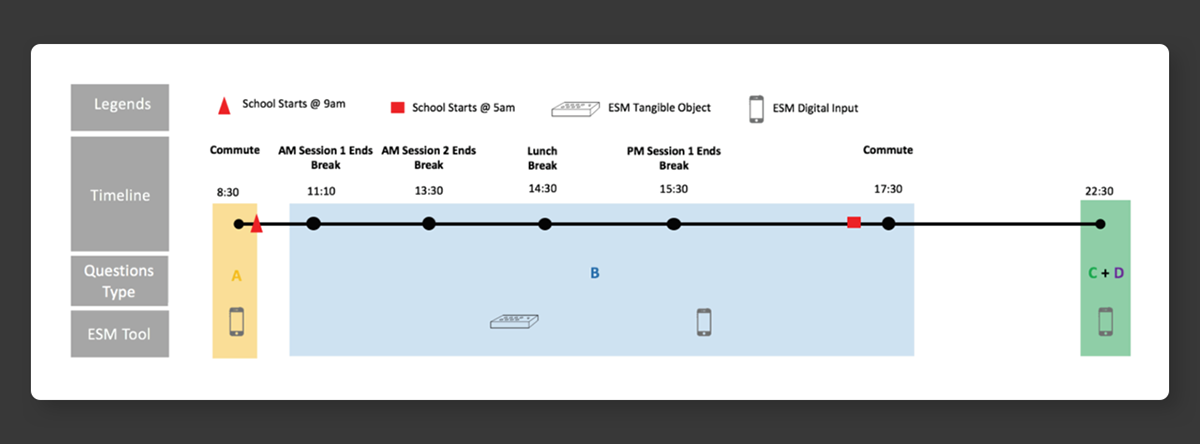
"We created a pencil case to study the students."
The design concept of the tangible object component of the ESM tool was a pencil case, which is an essential for student’s everyday study. A tangibe user interface is installed inside the pencil case for collecting data. Four questions were asked through the interface.
The pencil case also plays the role of a school study companion which encourages students to give feedback on their productivity and emotions during the school hours. The tool would then in sight at all the time during the participants’ daily routine in school and able to see the reminder light to make an entry when the light is turned on.
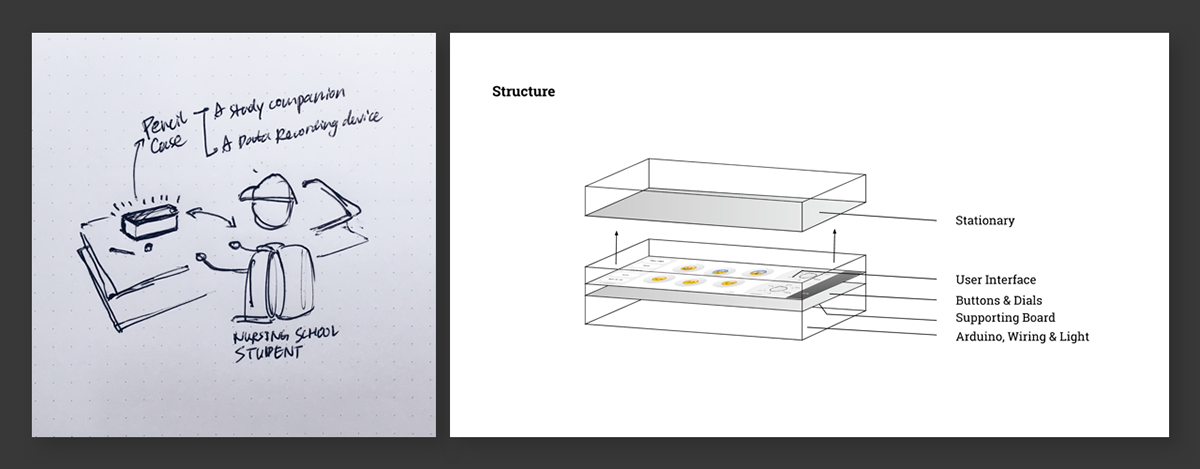
User Interface Design

Technical Components
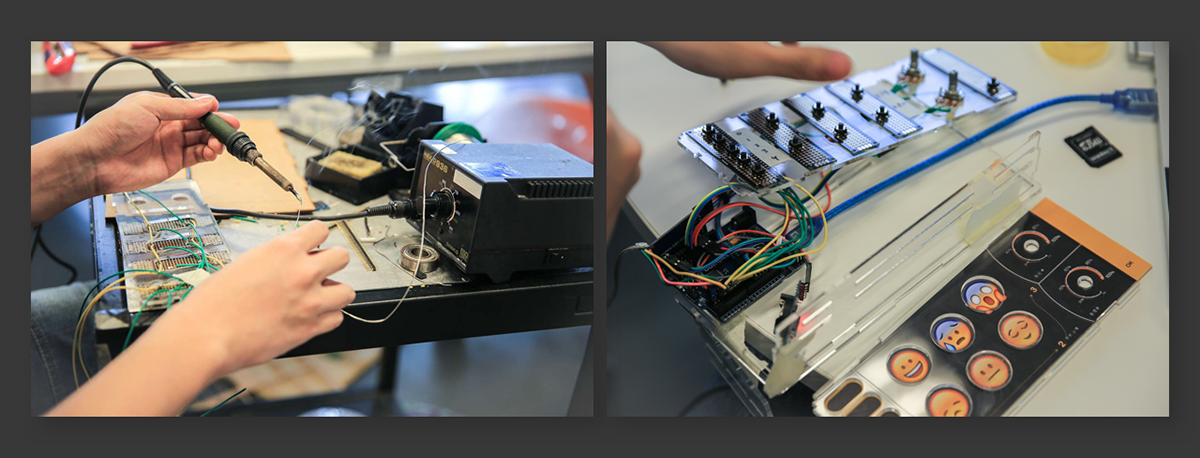
Final Prototype
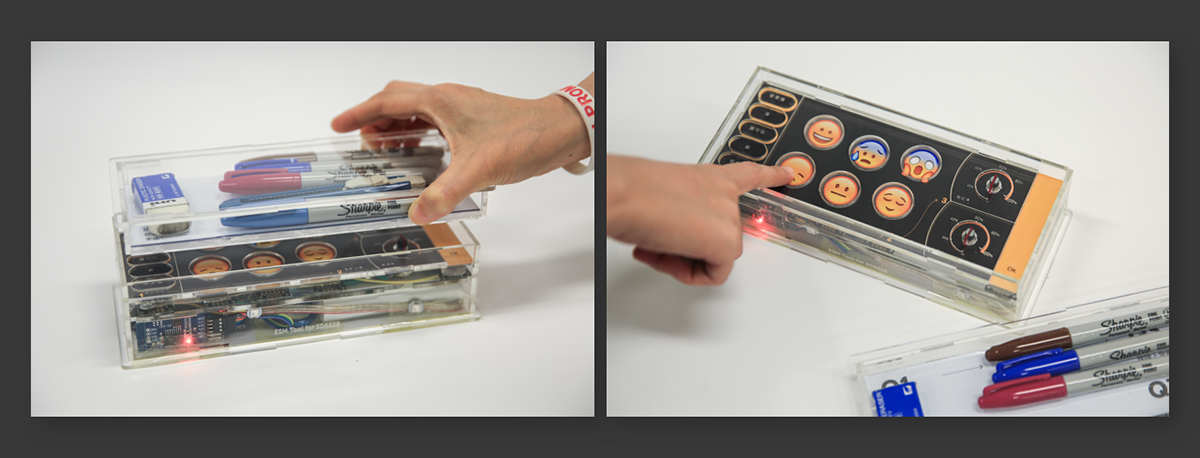
____________
Data Analysis
The dimension of data collected including overall productivity rating, emotion, how much can be recalled, how much was understood, picture of the moment of collection interval, description of the picture, date, time of collection and activity conducted. Additional dimensions included in the analysis were collected from User Interviews and debrief session were subject studied at the collection interval and class type. Data were entered into an excel to conduct analysis as well.
Data were posted on a white board for data-point-to-data-point analysis visually to identify interesting data point for further analysis or further follow up with participants at the debrief session. Then, data were entered or exported into excel for multiple dimension analysis.

____________
Data Visualization & Insights
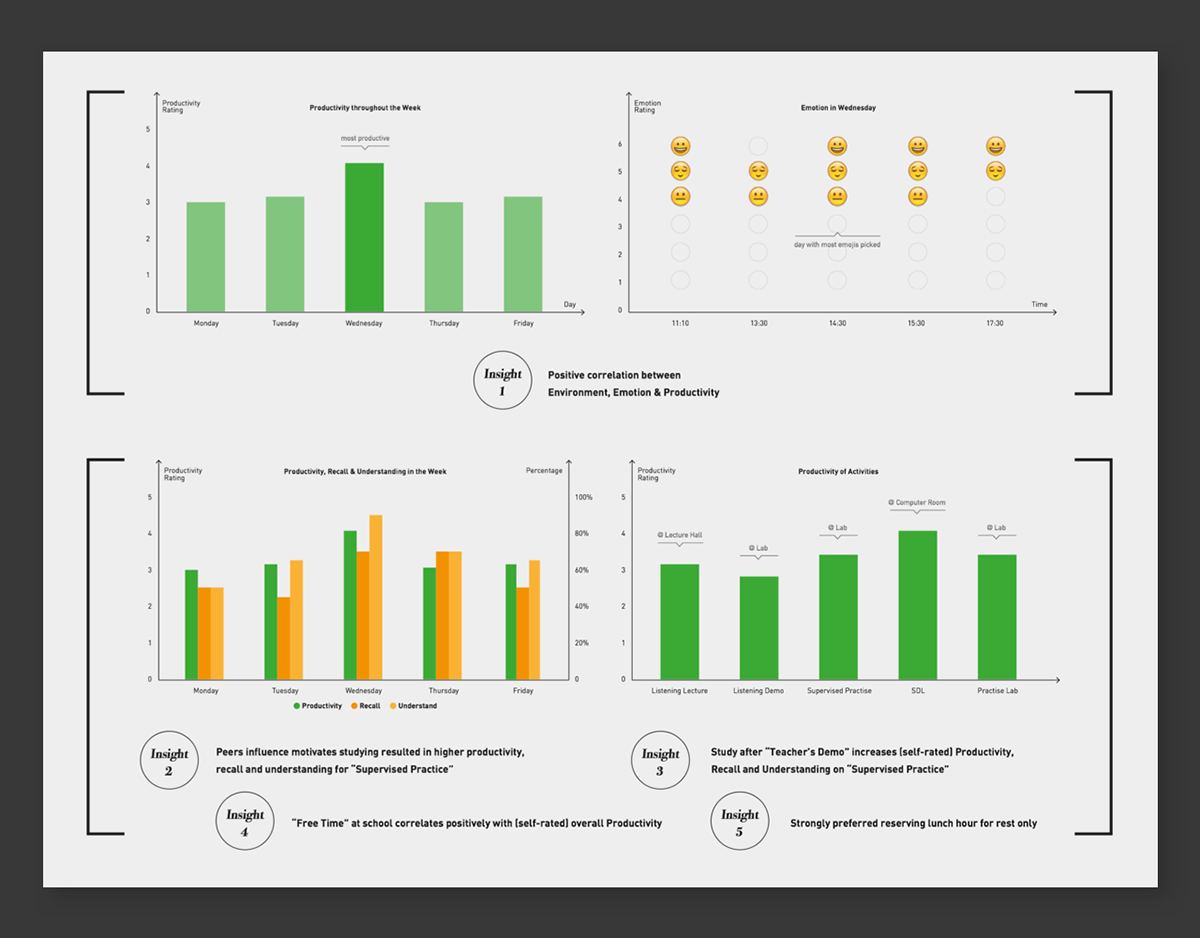

____________
Design Guidelines & Concept

The concept aims to redesign the learning journey of the Tuen Mun NS students targeting the learning experience of the practical class teaching students the hands-on practical skills that was identified as the most challenging and stressful class type students experience during their study journey at the Tuen Mun NS school.
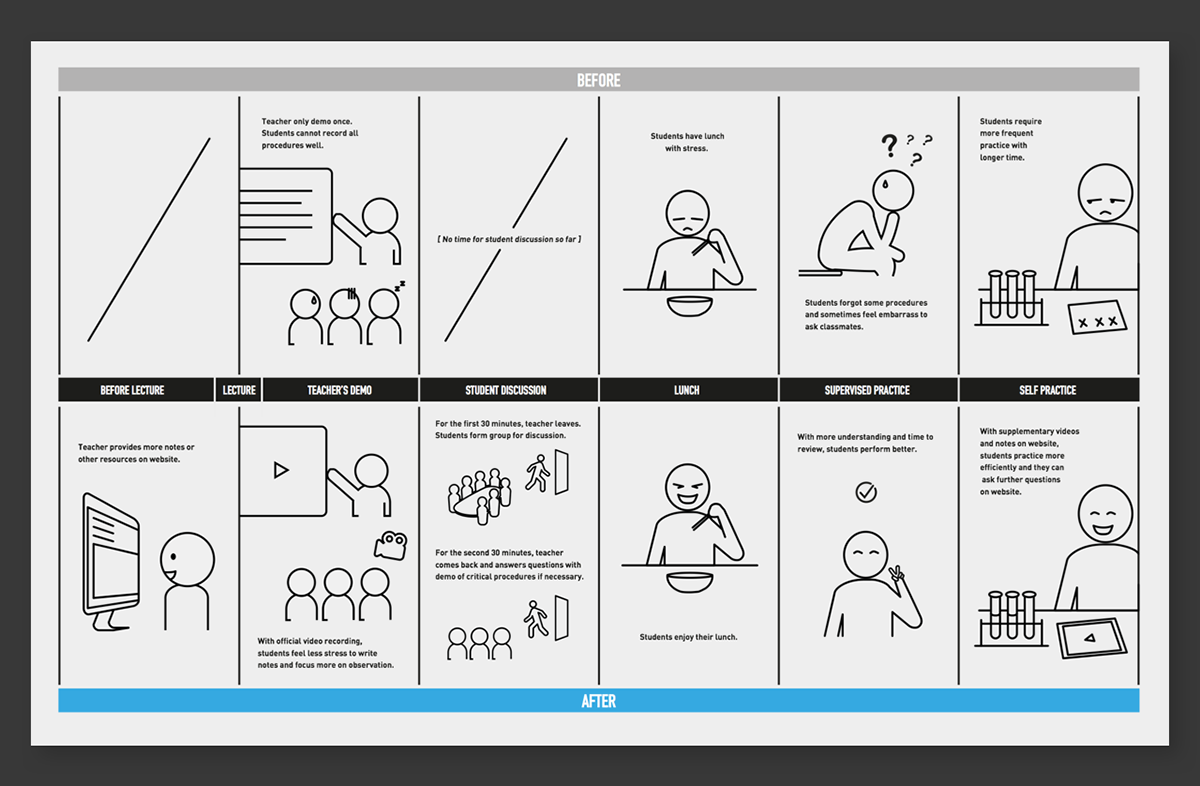
Base on the current structure of the practical class, the sequence of the structure started off with (1) “Lecture” covering the theoretical knowledge and background follow by (2) the “Teacher Demonstration”, then (3) “Supervised Practice” and, finally (4) Self-practice before being assessed by a practicum examination.
The aim of the design is to assist and facilitate two-ways interactions between students and instructors, encourage group learning and increase self-learning time to digest material covered with the goal to enhance not only the productivity but also the quality of their lunch time.
The concept focused on optimizing the overall user experience of the students to relieve the time-bound stress in recording, recalling and understanding the practical, hands-on skill being taught. The concept enhance the user experience at multiple touch points throughout the learning experience of the hands-on skills.

Fig. Final presentation at Tuen Mun Nursing School
_
Project by: Joanna Leung / Sunny Cheung / Yao Yueyang / Theodore Tsai
Instructor: Dr. Juan Carlos Jimenez Garcia
Instructor: Dr. Juan Carlos Jimenez Garcia
Client: Tuen Mun Nursing School
PolyU Hong Kong MDes Interaction Design 2016




